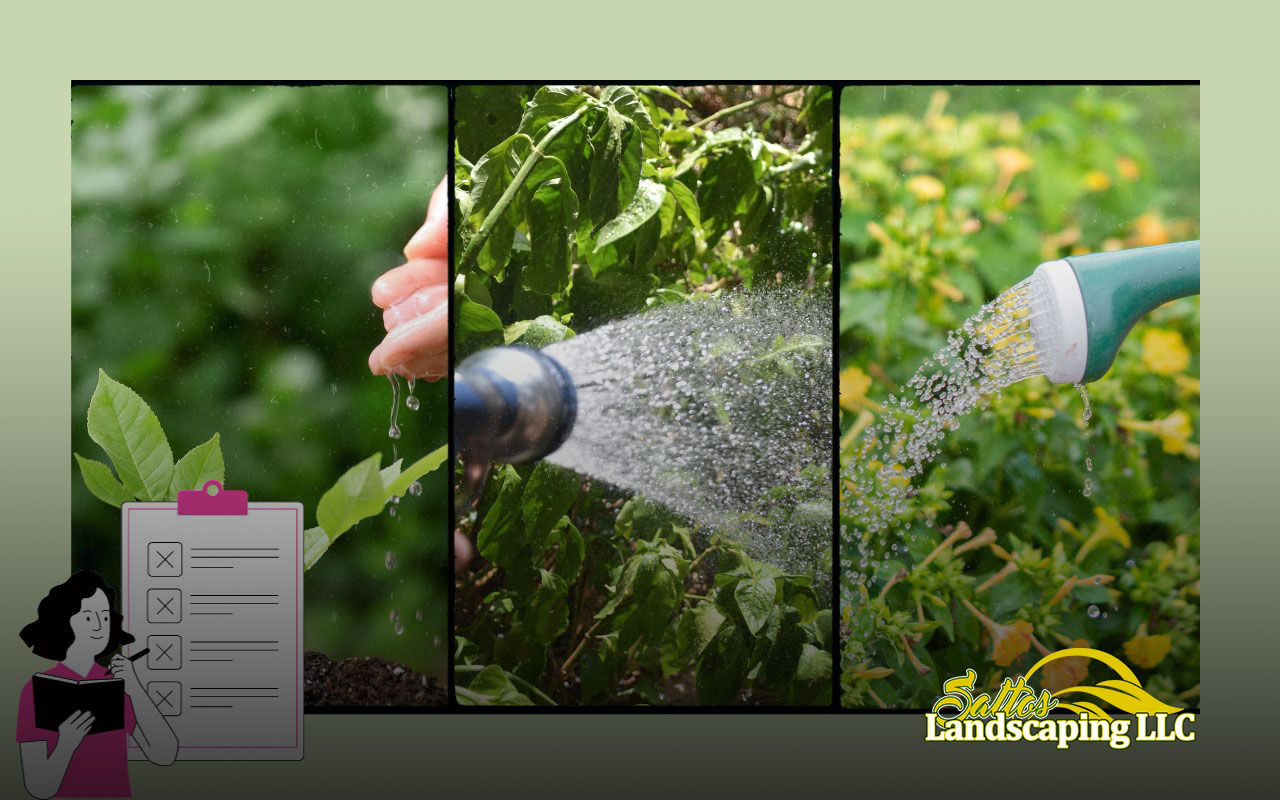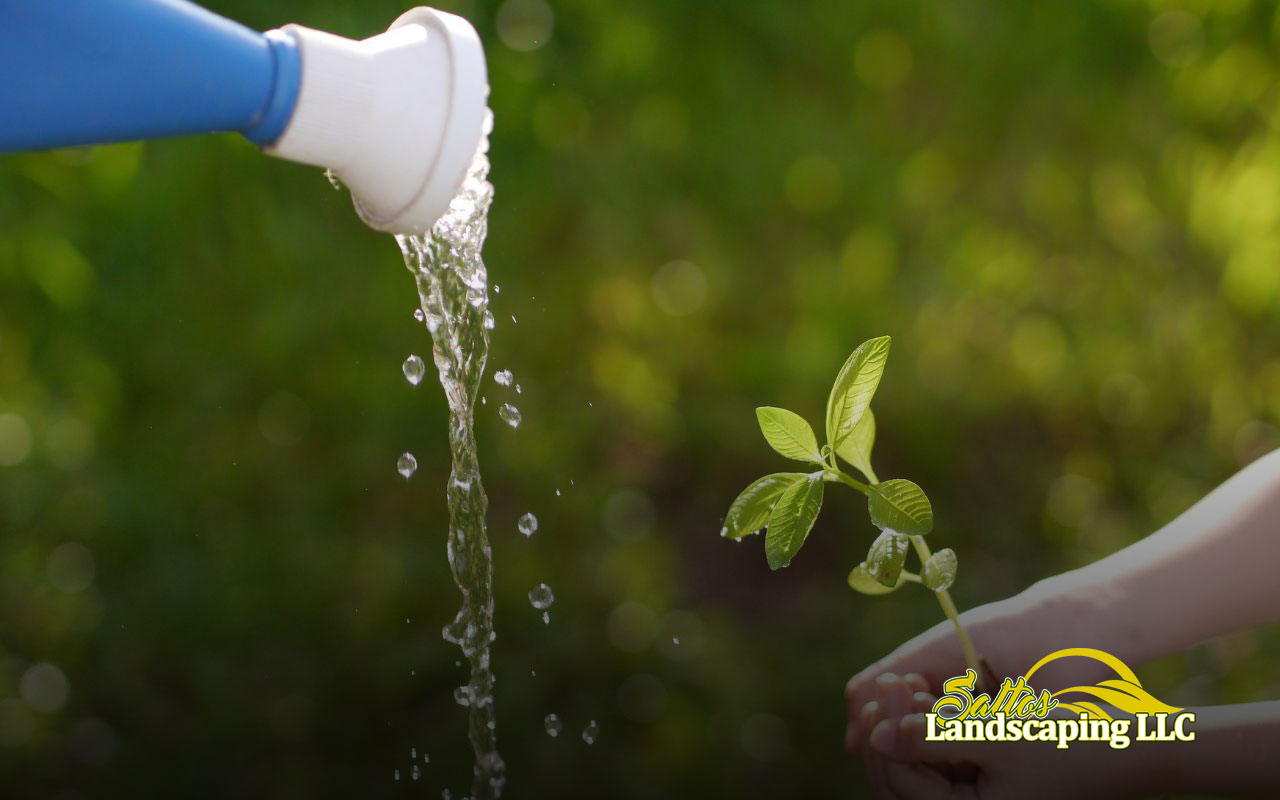In this Article:
Ensuring the healthy establishment of your new lawn starts with mastering the watering schedule for new sod. This crucial step in lawn maintenance plays a vital role in root development and overall turf health. Laying down new sod is a substantial investment in time and resources, requiring careful attention to detail, especially in the initial weeks.
Properly watering new sod ensures that the roots establish themselves in the soil, leading to a lush, resilient lawn that can withstand changing seasons and various stress factors. This guide is designed to provide homeowners and landscaping enthusiasts with all the necessary information to create an effective watering schedule, ensuring your new sod receives the care it needs to thrive. By the end of this article, you will have a comprehensive understanding of the key principles and practices that constitute a successful watering routine for new sod.
Watering Schedule Calendar for New Sod:
Week 1-2: The Establishment Phase
- Day 1-2: Water twice daily, morning and late afternoon. Ensure sod and top inches of soil are thoroughly soaked.
- Day 3-7: Continue watering twice a day. Monitor soil moisture closely.
- Day 8-14: Reduce watering to once daily, maintaining consistent soil moisture.
Week 3-4: The Transition Phase
- Week 3: Water every other day, allowing the top inch of soil to dry out between waterings slightly.
- Week 4: Reduce watering further, allowing the top two inches of soil to dry out between waterings. Water every 2-3 days.
Week 5 and Beyond: The Maintenance Phase
- Week 5+: Transition to regular watering schedule (1-2 times per week, depending on conditions). Monitor soil moisture and adjust as necessary.
Notes:
- Ensure consistent soil moisture, especially during the first two weeks.
- Adjust the schedule based on weather conditions and soil type.
- After week 5, continue to monitor soil moisture and root development, adjusting your watering schedule as necessary for long-term lawn health.
You can download this checklist and use it to keep track of your watering schedule. Click Here.
Pro Tips and Common Queries: Watering Schedule for New Sod

Tips for Success:
Adjust for Weather Conditions: Keep a close eye on the weather and adjust your watering schedule accordingly. Hot, windy days dry the sod faster, necessitating more frequent watering. Rainy days, on the other hand, may provide enough moisture, allowing you to skip a scheduled watering.
Morning Watering is Key: Aim to do most of your watering in the early morning. This allows the water to reach the roots before the day’s heat, reducing evaporation and ensuring your sod receives the moisture it needs.
Check Soil Moisture Regularly: Use a soil moisture meter or a simple screwdriver to check the moisture levels in your soil. The top 1-2 inches should be consistently moist, especially in the first few weeks.
Avoid Over-Watering: While keeping the sod moist is crucial, over-watering can lead to root rot and other issues. Ensure that the soil is moist but not waterlogged.
Frequently Asked Questions:
Q: How long does it take for new sod to root?
A: New sod typically begins to root within the first 7-10 days, with deeper root growth occurring over the following weeks. It’s generally well-established after 4-5 weeks.
Q: Can I mow my new sod during the initial watering period?
A: It’s best to wait until your new sod has rooted firmly before mowing. This usually takes about 3-4 weeks. When you do start mowing, be sure to use a sharp blade and avoid cutting more than ⅓ of the grass height at a time.
Q: What are the signs of over-watering new sod?
A: Overwatered sod may appear mushy or waterlogged, and you might notice a foul odor indicating root rot. The grass may also turn yellow or brown.
Q: How should I adjust my watering schedule for sod laid in the summer vs. the spring or fall?
A: Sod laid in the hot summer months will require more frequent watering to prevent drying out, while sod laid in the cooler spring or fall months may need less. Constantly adjust based on the current weather conditions and soil moisture levels.
By following these tips and paying attention to the needs of your new sod, you can ensure a successful establishment phase and enjoy a lush, healthy lawn. Don’t hesitate to seek professional advice if you are unsure about any part of the process.
Achieve Lawn Perfection with Saltos Landscaping LLC

There’s no room for guesswork when laying down new sod and establishing a vibrant, lush lawn. That’s where Saltos Landscaping LLC comes in, bringing expertise, precision, and a dedication to excellence that ensures your property gets off to the best possible start.
At Saltos Landscaping LLC, we understand that a lawn is more than just a patch of grass. It’s a statement, a living space, and a crucial part of your home’s curb appeal. That’s why we go the extra mile, providing tailored solutions to make your property beautiful!
Contact Saltos Landscaping LLC today, and start crafting the perfect watering schedule for your new sod!



